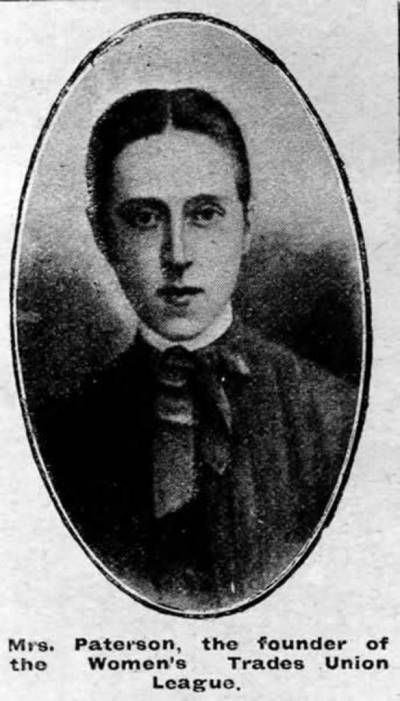 Emma Smith (1848–1886) was an activist who worked to encourage the formation of trades unions for women workers. The historian G.D.H. Cole called her ‘the only early feminist who had any knowledge of trade union problems’.
Emma Smith (1848–1886) was an activist who worked to encourage the formation of trades unions for women workers. The historian G.D.H. Cole called her ‘the only early feminist who had any knowledge of trade union problems’.
Emma was forced into the labour market after the early death of her father in 1864 and after a number of jobs she became an Assistant Secretary at the Working Men’s Club and Institute Union. She spent five years at the Club Union and was then briefly employed by the Women’s Suffrage Association. In 1873 she married Thomas Paterson and they went on a working honeymoon to the United States. Emma studied the operation of the Female Umbrella Workers' Union and a number of unions operating in predominantly female occupations. Upon her return she wrote an article in Labour News in April 1874 in which she proposed a new organisation provisionally called the National Protective Union of Working Women and targeted four predominantly female trades (tailoring, earthenware, straw plaiting and bookbinding) which might be capable of supporting trades unions. The organisation, which eventually took the name the Women’s Protective and Provident League, was established and Emma Paterson became the Secretary.
Emma played a supporting role in the 1875 Dewsbury Weavers' Strike when women struck after a reduction in wages. The women developed a highly organised response and after six weeks of lock out, obtained concessions from the employers. Emma and other women founded another organisation in Bristol, the National Union of Working Women (NUWW).
The NUWW argued for representation at the Trades Union Congress and Emma and Edith Simcox became the first ever women delegates to the TUC, attending the Congress held in Glasgow in October 1875. They represented the Society of Women Bookbinders and the Society of Women Upholsterers and soon started to press for equal pay for women. Emma attracted controversy in the TUC by rejecting much factory legislation, arguing that it would be used to lower the wages and working conditions of women. She spoke at a number of Conferences to say that trade union activity would, in the long term, be more beneficial to women workers.
In 1876 she started the Women’s Union Journal and was responsible for most of the material, reports of meetings, details of new societies etc. She also established the Women’s Printing Society and the Victoria Press and encouraged the employment of women in crucial areas of the printing trade.
Although precise figures are difficult to obtain, it would appear that Emma and her organisation were responsible for the formation of around thirty trades unions, but the scope of her work was much broader. She played a role in the setting up of the Women’s Halfpenny Bank and established the Women’s Union Swimming Club in 1878 after a large death toll in a River Thames steamboat accident had revealed that women had limited opportunities to learn how to swim.
A notable dispute that Emma and her comrades were involved in was at the Royal Army Clothing Works in 1879 where 1500 women were laid off and then told that they could re-apply at lower wages. Although, through contacts, the matter was raised in Parliament, the ‘urgent report’ which was commissioned to look into the matter never appeared.
Thomas Paterson, who had been supportive of Emma, died in 1882 and Emma’s poor health and growing indebtedness led her to become less active in the movement. She did continue to attend the TUC and carried out a lengthy campaign, against initial male indifference, for women factory inspectors to be appointed.
She died aged 38 in 1886 from the then little-understood complaint of diabetes. Shortly before she died the NUWW became known as the Women’s Trade Union League. A male opponent of hers at the TUC said of her that ‘her views…were always unpopular, but she expressed them fearlessly’.
The Working Class Movement Library has material for people to come in and read that relates to Emma Paterson and women in trade unions. There is a copy of She Led Women into a Man’s World by Goldman [H11]; details of many of the trades unions established at the time can be found in The Historical Directory of Trade Unions: Volume 4 and a portrayal of the life of Emma can be found in the Dictionary of Labour Biography: Volume 5. There is a large collection of material on trade union history but two works which look at women in the movement are by Drake [Women – Box 14] and Lewenhak [B27].
